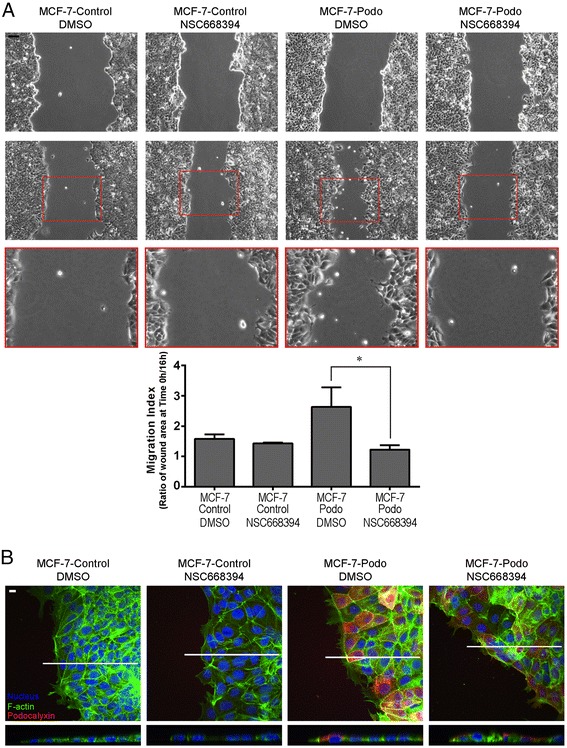Fig. 4.

The ezrin inhibitor NSC668394 decreases collective migration and leading lamellipodia formation of podocalyxin-overexpressing cells. a Serum-starved MCF-7-control and MCF-7-podo cell monolayers were cultured and scratched as described in Fig. 3 in the presence of DMSO (vehicle control) or the ezrin inhibitor NSC668394, and they were imaged by phase microscopy after 16 hours. Note that NSC668394 significantly decreased the collective migration of the MCF-7-podo cells into the wound as quantified using the migration index described in Fig. 3 (mean ± SD, unpaired Student’s t test, *p >0.05). b MCF-7-control and MCF-7-podo cells were subjected to wounding in the absence and presence of NSC668394 for 16 hours. The cells were then fixed and immunostained for podocalyxin (red) and f-actin (green). Projections of x/y confocal stacks (upper panels) and X–Z plane images (lower panels) indicated that NSC668394 decreased the formation of f-actin-containing leading lamellipodia in the MCF-7-podo cells. Scale = 10 μm. DMSO dimethylsulfoxide
